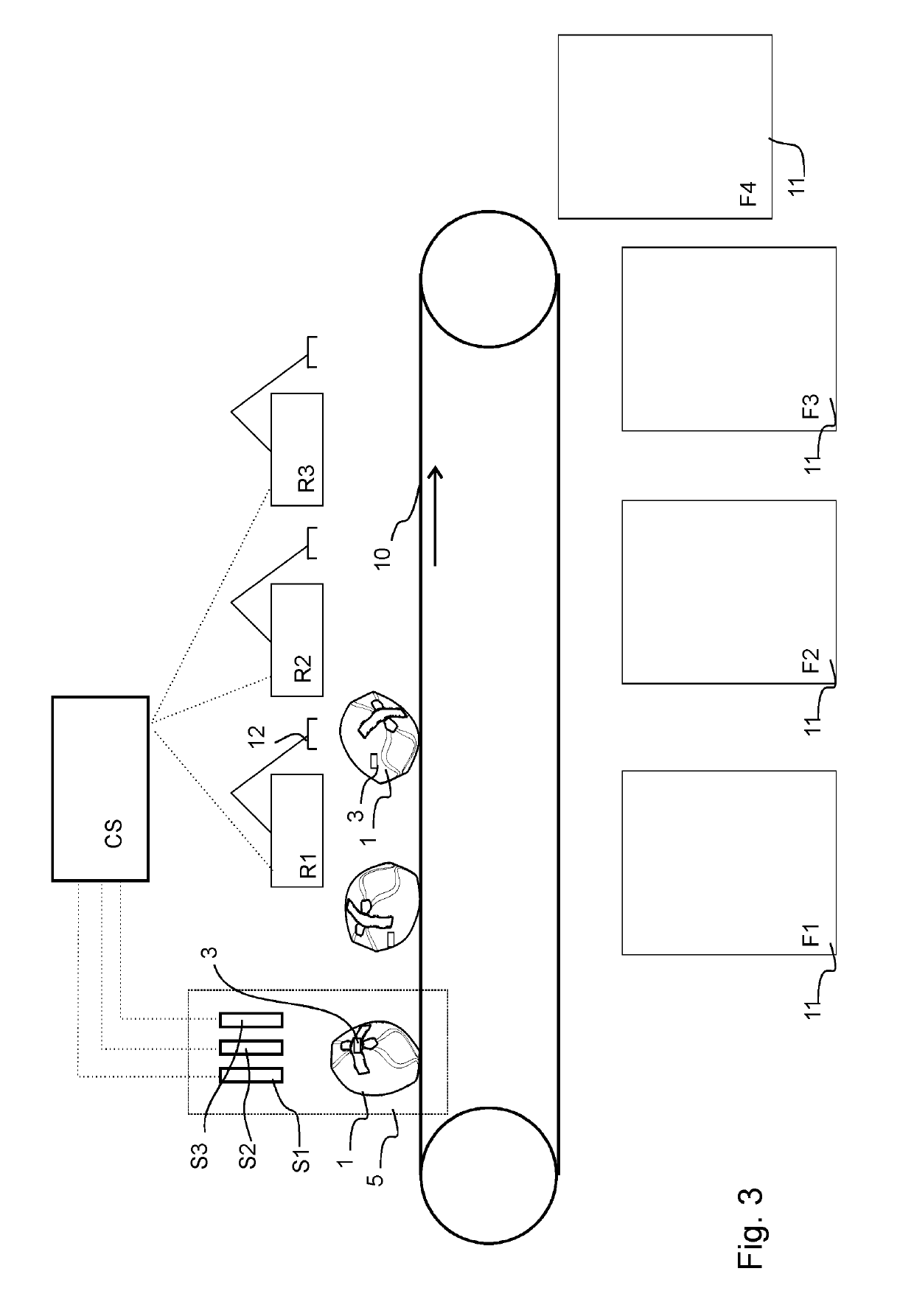Method, apparatus and system for sorting waste
a waste and waste technology, applied in the field of waste handling, can solve the problems of waste bag separation, difficult reclamation, awkward sorting of waste, etc., and achieve the effects of reducing capacity, optimizing reliable identification of waste components, and improving sorting results
- Summary
- Abstract
- Description
- Claims
- Application Information
AI Technical Summary
Benefits of technology
Problems solved by technology
Method used
Image
Examples
Embodiment Construction
[0031]In the invention waste material or recycleable material is placed in a waste bag, which is provided with an identifier 3, or to which an identifier 3 is attached e.g. to the closing means of the waste bag. A waste producer, such as a household, company or other community, pre-sorts the wastes that it produces into waste bags 1 and provides each bag 1 containing a sortable waste type with a closing means 2 comprising an identifier 3 according to the type of waste, or arranges the waste into a bag 1 that is provided in advance with an identifier 3, which can be an RFID identifier or a visual identifier or some other machine-readable identifier. Depending on the application, the waste types can be e.g. mixed waste, biowaste, paper, glass, metal, cardboard, hazardous waste, etc. Typically, each type of sortable waste, i.e. waste component F1 . . . Fn, has its own identifier, in which the type of waste the identifier 3 is intended for can be visually seen or otherwise sensed. In ad...
PUM
 Login to View More
Login to View More Abstract
Description
Claims
Application Information
 Login to View More
Login to View More - R&D Engineer
- R&D Manager
- IP Professional
- Industry Leading Data Capabilities
- Powerful AI technology
- Patent DNA Extraction
Browse by: Latest US Patents, China's latest patents, Technical Efficacy Thesaurus, Application Domain, Technology Topic, Popular Technical Reports.
© 2024 PatSnap. All rights reserved.Legal|Privacy policy|Modern Slavery Act Transparency Statement|Sitemap|About US| Contact US: help@patsnap.com










